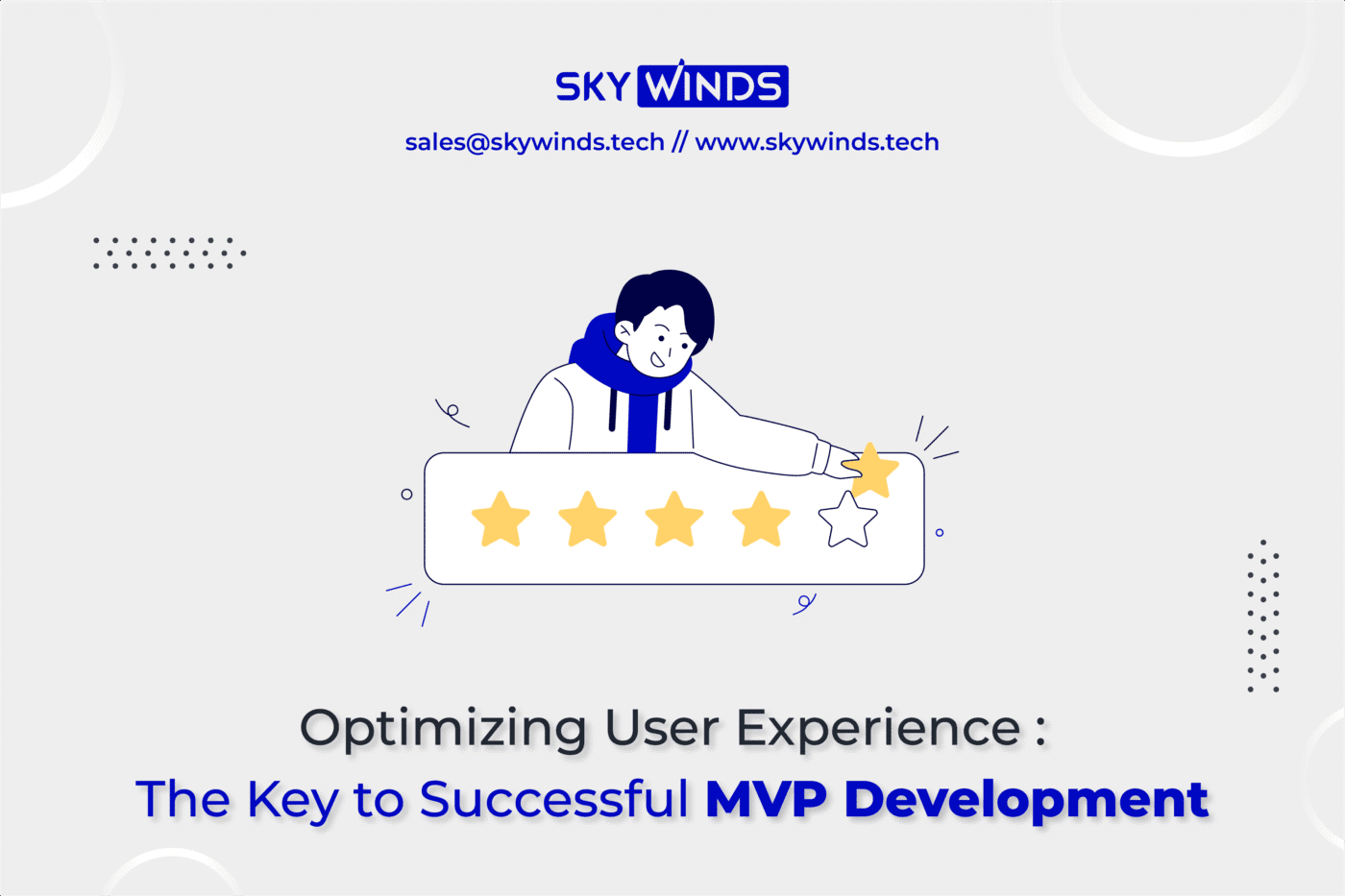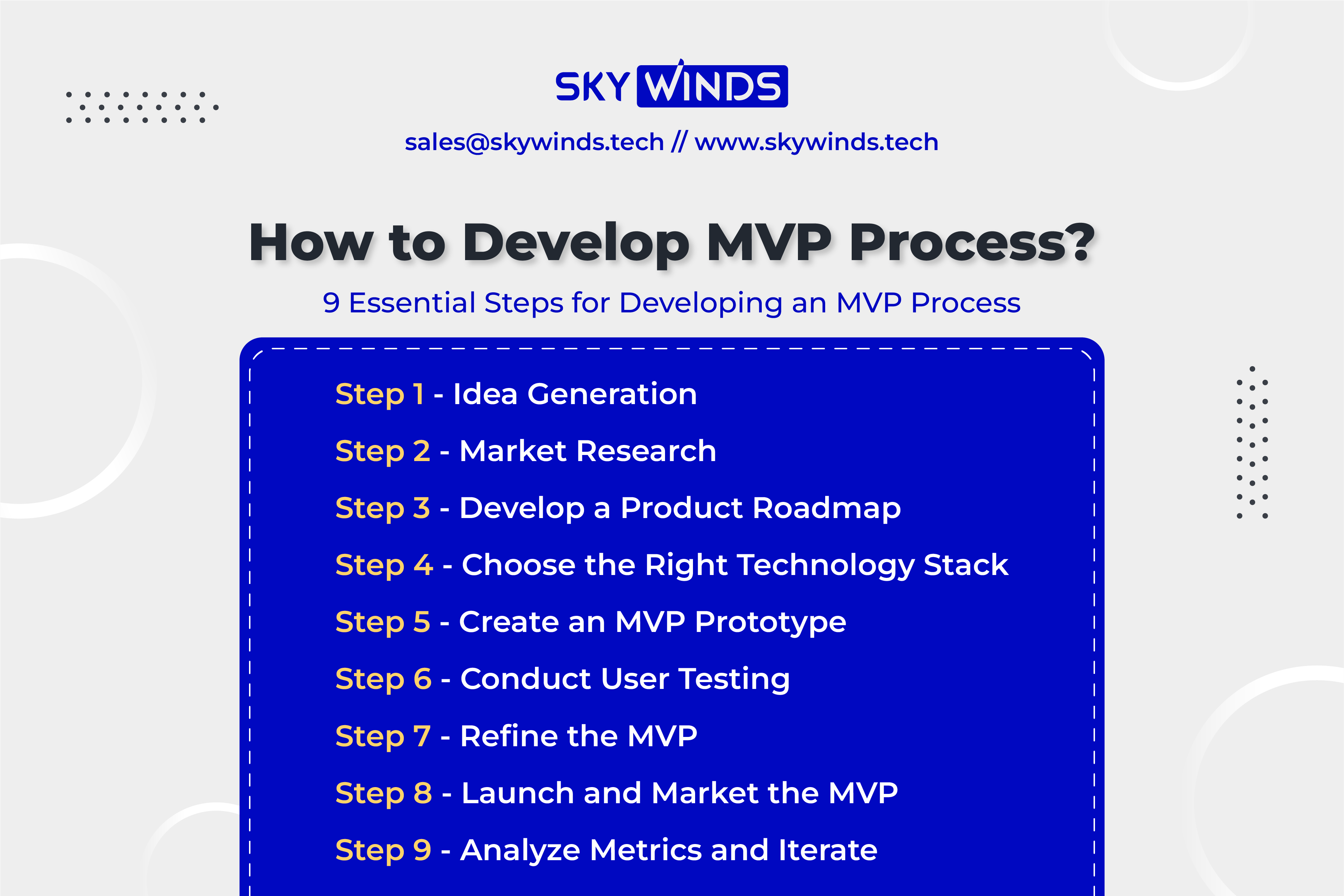
In today’s fast-paced digital era, software products have become crucial for businesses across various industries. Regardless of whether they are startups or Fortune 500 companies, every business requires a software product to maintain a competitive edge.
However, creating a software product from scratch is complicated, time-consuming, and costly. This is where the Minimum Viable Product (MVP) development comes into play.
Through this article, we will explore the concept of MVP, its development process, and of course, some real-world examples. By the end, you will have a clear understanding of the advantages of partnering with a proficient MVP app development company. So, let’s get started.
What is an MVP in Software Development?
A Minimum Viable Product (MVP) is an initial version of your application that is still in its early stages.
It is characterized as a product that includes enough features and functionalities to communicate the app’s concept to real users. Its purpose is to gather feedback for future product development.
An MVP is a strategy to create a scaled-down version of your application for public use rather than solely focusing on building all the features to achieve an immediate goal.
An MVP’s primary objective is to reduce enterprise application development costs and minimize the risk of financial failures that may arise from introducing an unanticipated product to the market.
Fundamental Importance of MVP in Software Development
Various statistics emphasize the importance of MVP development for startups.
A study by CB Insights on 101 unsuccessful startups revealed that 29% failed due to running out of funds. Similarly, a report by Startup Genome, which analyzed over 3,200 high-growth tech startups, found that 74% of failures were attributed to premature scaling.
In contrast, startups that scaled appropriately experienced a growth rate 20 times faster than those that scaled prematurely.
These statistics underscore the significance of initiating a new product development process with an MVP. It allows you to test a product or service with minimal resources and determine its viability before investing substantial time and money.
By doing so, you can avoid the pitfalls commonly encountered by startups and increase your chances of success.
Furthermore, there are additional reasons why an MVP holds crucial importance:
- It provides a starting point for discussions.
- Testing a prototype with a select group of prospects and actual users helps identify potential issues with the product.
- Building the actual product after dedicating time to enhance and refine the idea is a motivating step toward creating a fully-fledged product.
How to Develop MVP Process?

Based on statistics, approximately one-third of startup entrepreneurs admit to starting their businesses with less than $5,000 and need more certainty about their chances of achieving success.
To minimize the risk of failure during the initial year of establishing a business, prioritize the creation of an MVP.
MVP development services follow a lean approach to software product development, prioritizing delivering the most crucial features that address the user’s problem. This process encompasses several steps, including
1. Idea Generation
The ideation phase is crucial, forming the basis for the entire software development process. During this phase, the team brainstorms and evaluates potential solutions to the identified problem.
To ensure a diverse range of ideas, it is crucial to have a team with varied backgrounds and skill sets. The ideas generated in this phase should be evaluated thoroughly to ensure alignment with the company’s goals and available resources.
Understanding your niche product’s dynamics during this phase is essential for your application’s success.
For instance, the global mobile application market is projected to grow at a CAGR of 11.5% from 2020-2027. If you are interested in this industry, it’s important to note that app categories like eCommerce, Education, Gaming, Medical, and AI are anticipated to undergo substantial growth in the future.
Therefore, exploring and building an MVP around ideas related to these app categories is recommended. Examples of successful startups in this regard include SurveyAuto, Snackpass, CoachHub, NuvoAir, and many more.
2. Market Research
Market research is vital for any company aiming to introduce a new product or service. It provides valuable insights into consumer behavior, preferences, and needs, enabling informed decisions regarding product development, pricing, and marketing strategies.
Effective market research also entails collecting and analyzing data from diverse sources like surveys, focus groups, online reviews, and social media. This comprehensive understanding of the market and its potential customers helps identify gaps or opportunities.
Ultimately, market research insights contribute to strategic business decisions that enhance the chances of success in the market.
Neglecting proper market research and analysis is a common pitfall that can lead to startup failure. Research has shown that 35% of startups fail because they develop products irrelevant to their current market.
CB Insights has provided statistics highlighting other contributing factors to startup failures, including 38% running out of cash flow, 20% facing excessive competition, 15% encountering pricing/cost issues, and 14% lacking resources or experiencing team misalignment. These factors represent just a few among many that can lead to unsuccessful startups.
3. Develop a Product Roadmap
The product roadmap acts as a guiding document for the development team, stakeholders, and investors, clearly understanding the product’s development timeline and expected milestones. It helps the team stay on track and focus on the product’s key features and objectives.
4. Choose the Right Technology Stack
This step involves considering factors such as scalability, security, development costs, and future product maintenance requirements. The chosen technology stack should align with the company’s long-term business objectives and offer flexibility for future changes or updates.
Ultimately, a well-considered technology stack can enhance the product’s performance, user experience, and competitive edge in the market.
Note: Outsourcing is chosen by approximately 46% of businesses to access expertise not available in-house. This approach ensures the product is developed according to best practices and standards. So, try going for this approach if you need more in-house expertise.
5. Create an MVP Prototype
This stage involves developing an MVP prototype to validate assumptions about the product’s viability, market demand, and user behavior. It enables you to gather early feedback from users, which can be used to refine the product and make informed decisions for future development.
Developing an MVP prototype also helps save time and resources by identifying potential issues early on, reducing the risk of developing a product that does not meet user needs or market demands.
6. Conduct User Testing
In MVP software development, user testing involves selecting a representative group of users and having them perform specific tasks using the product. The feedback collected during these tests is used to identify pain points and areas for improvement in the product. This approach helps create a user-centric product that caters to the target audience’s needs.
7. Refine the MVP
Iteratively enhancing the initial version of a product is a vital step in the product development process. Involves refining the MVP by incorporating user feedback and conducting data analysis. Feedback can be obtained through user interviews, surveys, usability testing, and analytics tools that track user behavior and engagement.
According to statistics, 93% of startups altered their initial business models based on user feedback. Because by following this iterative approach to refining the MVP, you can create a product that better caters to the target audience, enhances user satisfaction, and increases its chances of success in the market.
8. Launch and Market the MVP
Launching an MVP marks a significant milestone in the journey of any startup. But the true challenge lies in effectively marketing the MVP to the intended audience.
Social media, email marketing, and content marketing are popular channels for MVP promotion. Harnessing the power of word-of-mouth marketing is also essential.
Satisfied early adopters can become brand advocates, helping to spread the word. Providing incentives such as discounts or referral bonuses can further motivate early adopters to share their positive experiences with others.
9. Analyze Metrics and Iterate
Gathering feedback from early adopters is vital as it aids in product improvement and makes it more appealing to the target audience. This feedback is a valuable resource for prioritizing the product roadmap and making informed decisions regarding future iterations.
Monitoring metrics such as user engagement, conversion rates, and customer acquisition cost allows for measuring MVP launch success and the effectiveness of marketing efforts.
Real-World Examples and Case Studies of MVP Development Companies
Let’s explore the captivating realm of products that started small and skyrocketed to success. Take Amazon, for example. Remember when it was merely a modest website?
A place where people could purchase a book or two—a primary online bookstore. That’s how it `all began. From there, it expanded into the colossal marketplace we know today.
Then there’s Uber. Well, it started pretty simple—a straightforward service to request a ride. No extravagant options or upgrades. Nevertheless, it was enough to initiate a transportation revolution.
Lastly, let’s touch on Instagram. Initially, it was merely a photo-sharing app with trendy filters. But today, it has become a social media juggernaut with video and messaging capabilities.
The success of these examples illustrates the tremendous impact an MVP can have in transforming a simple idea into a groundbreaking product.
Conclusion
Embracing a user-centric approach to MVP agile development is a powerful strategy for success in today’s competitive marketplace. By prioritizing the needs and preferences of your customers, you can create a minimum viable product that truly resonates with them and addresses their pain points.
By gathering feedback, iterating, and continuously improving, you can build stronger customer relationships, foster loyalty, and pave the way for long-term success. Remember, putting your customers first is not just a business strategy; it’s a mindset that can lead to remarkable growth and sustainable success.
So, go ahead and embark on your user-centric MVP journey, and watch your customers become your most vocal advocates, driving your business forward.

